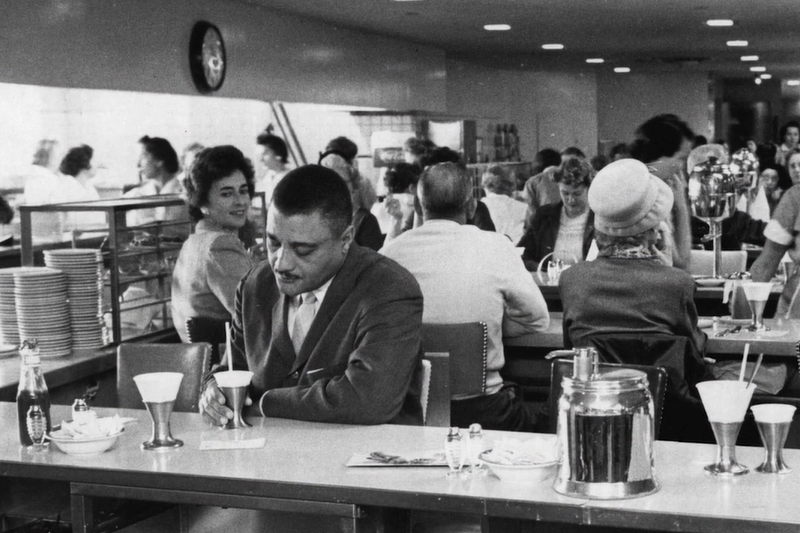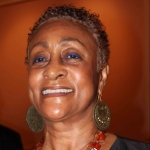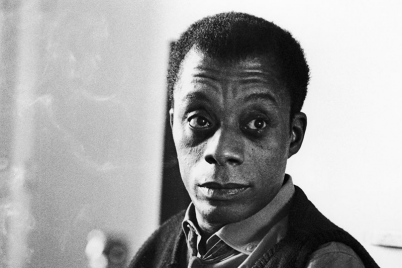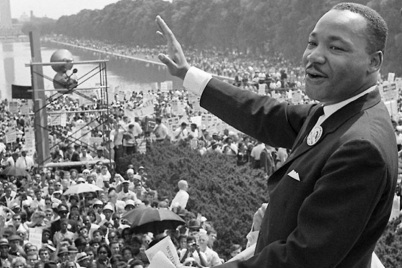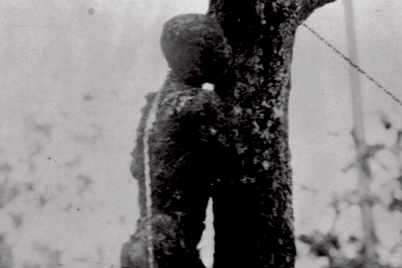Black people were not allowed in downtown St. Petersburg except to go to work. Dr. Ralph Wimbish is seen here integrating the downtown Mass Brothers lunch counter in 1961.
By Attorney Jacqueline Hubbard, President, ASALH
Sundown towns were all white cities that enforced segregation by excluding people of color from the towns after dark. This horrendous practice affected many black people, through a combination of racial laws, intimidation, police enforcement, and violence.
The term came from signs posted, usually at the city limits, that said black people had to be out of town by sundown. The practice was not restricted to southern states. Other states, particularly in the West and Mid-West, were as restrictive to black travelers as southern states such as Alabama, Mississippi, Florida and Georgia.
“Whites Only Within City Limits After Dark” was a familiar sign at the city limits of these racist towns. Often racial slurs were used on the signs.
It was an irrational, cruel, and inhumane vestige of the system of enslavement that continued the racist system of segregation by color, racial inequality, and public humiliation of people of color. People could work and labor in these towns during the day, but could not live or remain there after dark.
It was a treatment that debased the citizenship of black Americans and made a mockery of the Emancipation Proclamation, the Civil War, and the 13th, 14th and 15th “Reconstruction Amendments” to the United States Constitution.
This practice was widespread after Reconstruction and continued into the 1970s. There are still vestiges of it today. Many areas are still unfriendly and non-welcoming to blacks.
In James Loewan’s book “Sundown Towns; A Hidden Dimension of American Racism,” he found that from Maine to California, there were thousands of communities that kept African Americans out by force, law or custom.
“Their chilling stories have been joined more recently by the many elite (and some not so elite) suburbs like Grosse Pointe, MI, or Edina, MN, that have excluded nonwhites by ‘kinder gentler means.’”
When Loewan began research on this book, he expected to find about 50 towns across the country; instead, he found thousands.
The sundown towns listed in Florida were not surprising: Altha, Cedar Key, Coral Gables, Daytona Beach Shores, Del Ray Beach, Elfers, Flagler Beach, Gulfport, Holmes Beach, Longboat Key, Melbourne Beach, Miami Beach, Myakka City, Ocoee, Old Homosassa, Palm Beach, Samsula, Southport, St. Cloud, Venice, Winter Haven and Yankee Town.
In a 2008 “UU World” article, Loewan said many sundown towns weren’t always all-white.
“Between 1890 and 1954, thousands of independent communities across the United States drove out their black populations or took steps to forbid African Americans from living in them. Sundown suburbs formed a little later, mostly from 1900 to 1968.”
Other cities, such as St. Petersburg and Largo, according to anecdotal evidence, actively enforced segregation without signs.
When asked how this enforcement took place, at least one local black resident stated that the segregation limits were enforced by law enforcement, who would sometimes pull black drivers over to “inquire why” they were in certain areas “after dark.” The drivers would be told to leave the area. These practices continued into the 1970s.
Sundown towns obviously posed quite a danger to black travelers using cars to travel from one state to another. They could be arrested, beaten or lynched if they wandered into one of these segregated towns.
Jim Crow laws and Black Codes sustained racial segregation and prevented black travelers from pulling into a segregated roadside motel when they were tired. Black families had trouble finding places to eat or were denied the use of a bathroom at some gas stations.
In order to help black travelers, “The Negro Motorist’s Green Book,” by Victor Hugo and Anna Green, began publication annually in Harlem 1937-64. Its distribution helped black motorists travel safely across a segregated landscape. The Green Book, as it was called, printed a list of accommodations that black travelers could use.
In 1954, the United States Supreme Court outlawed racial segregation in public schools and later in public accommodations. After a vicious civil rights struggle, restaurants, motels, gas stations began to open up.
In 1968, Congress amended the Civil Rights Act to include Title VII, the Fair Housing Act, which made the practice of racial discrimination in housing unlawful. The signs began to come down, and many sundown towns were forced to integrate.
Attorney Jacqueline Hubbard graduated from the Boston University Law School. She is currently the president of the St. Petersburg Branch of the Association for the Study of African American Life and History, Inc.

